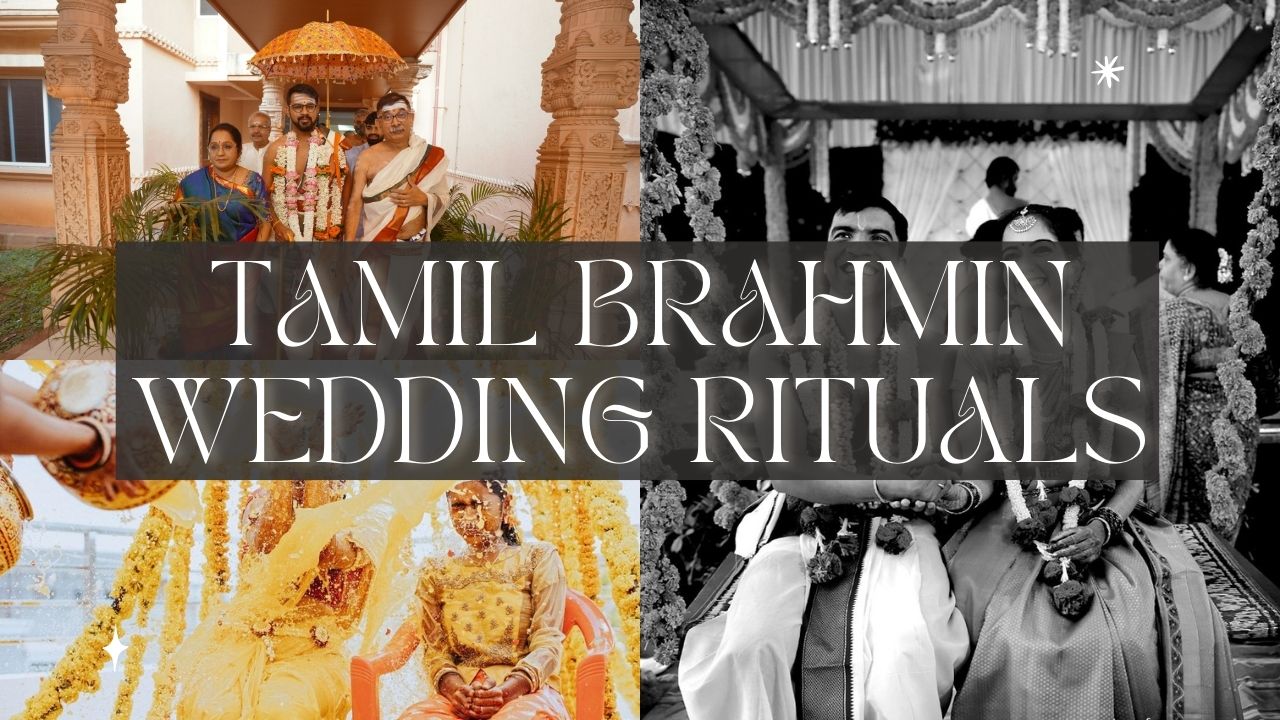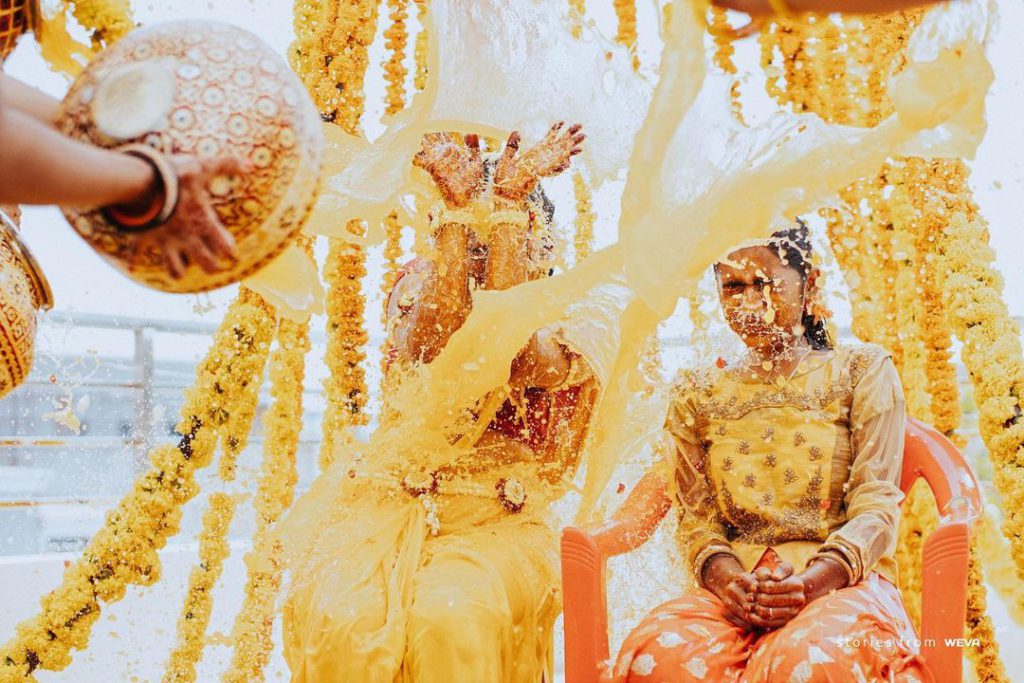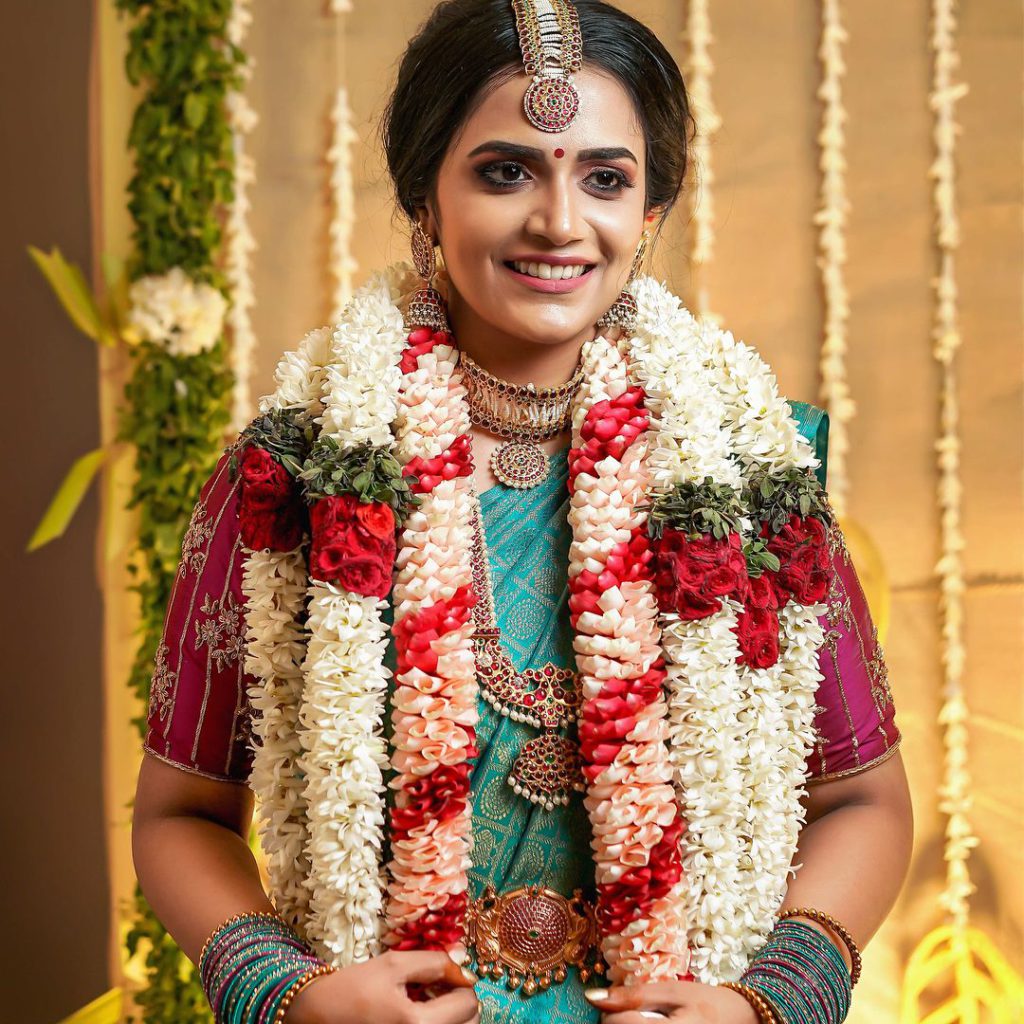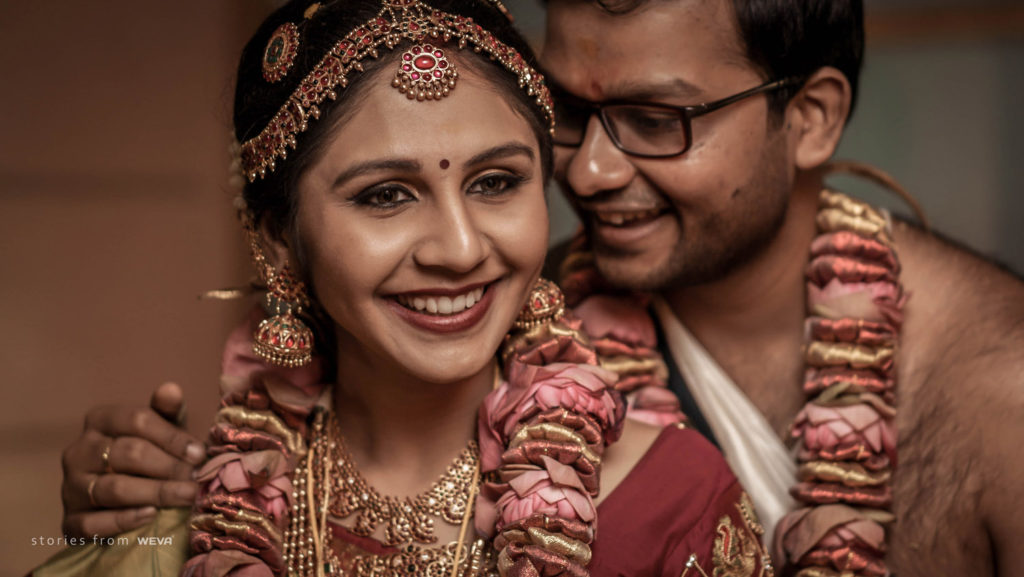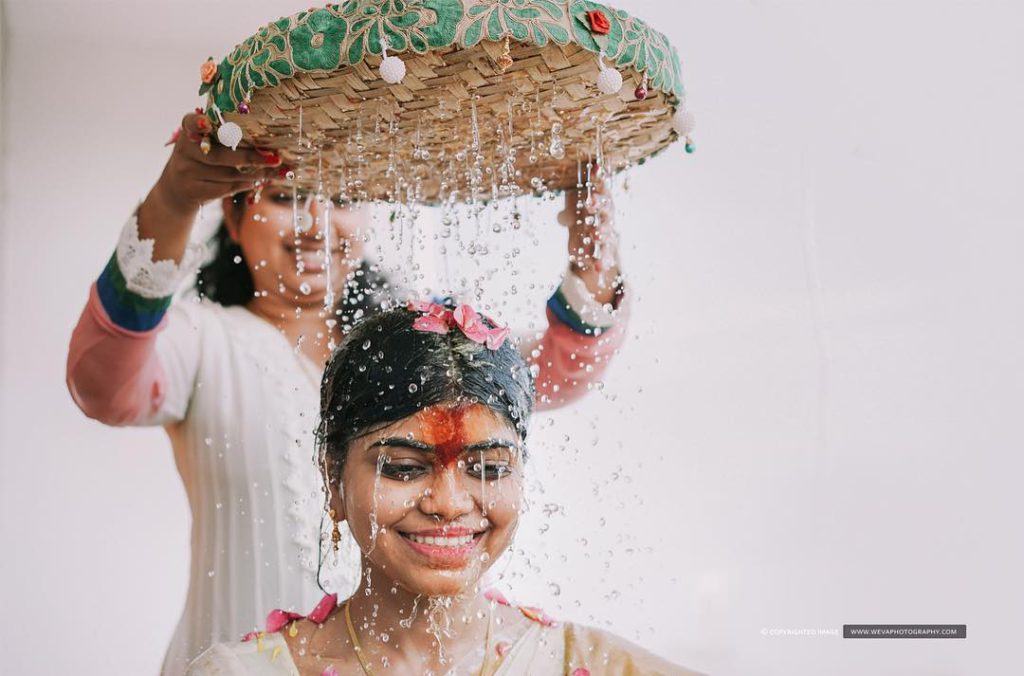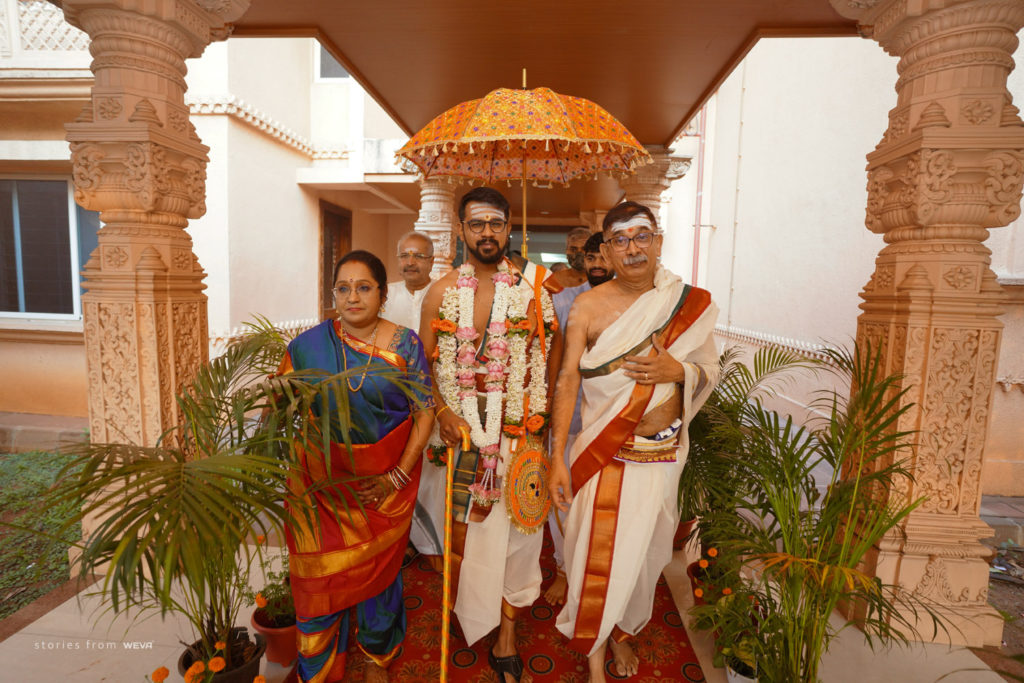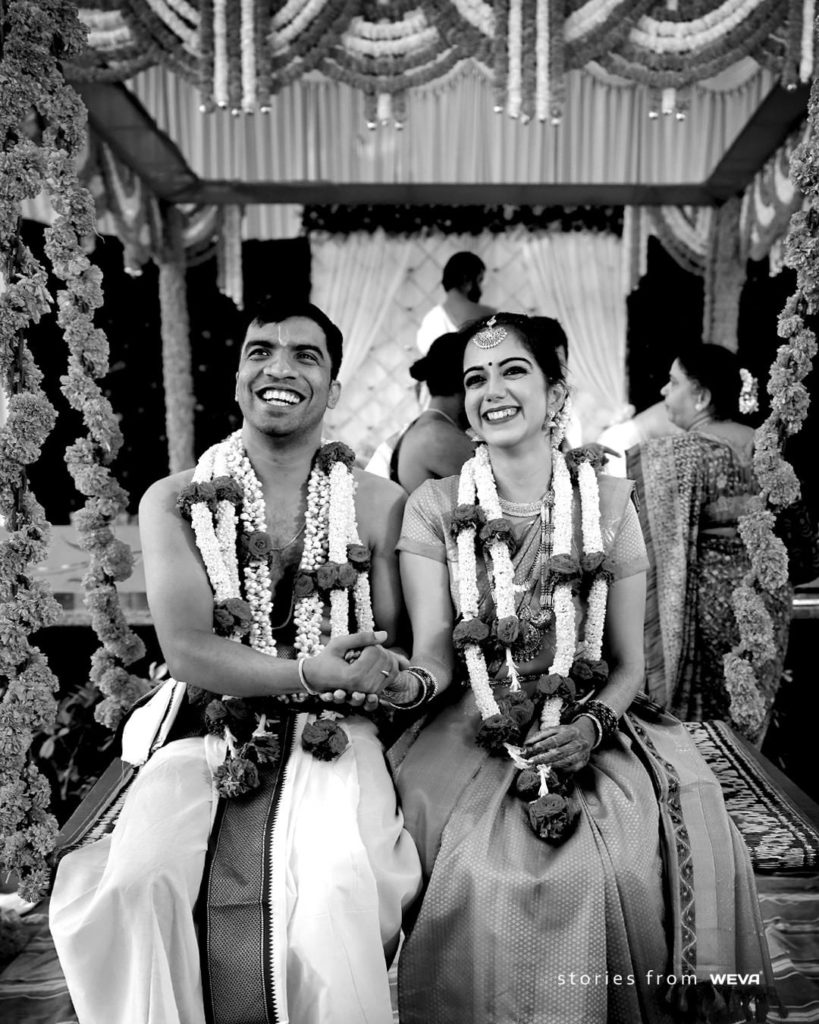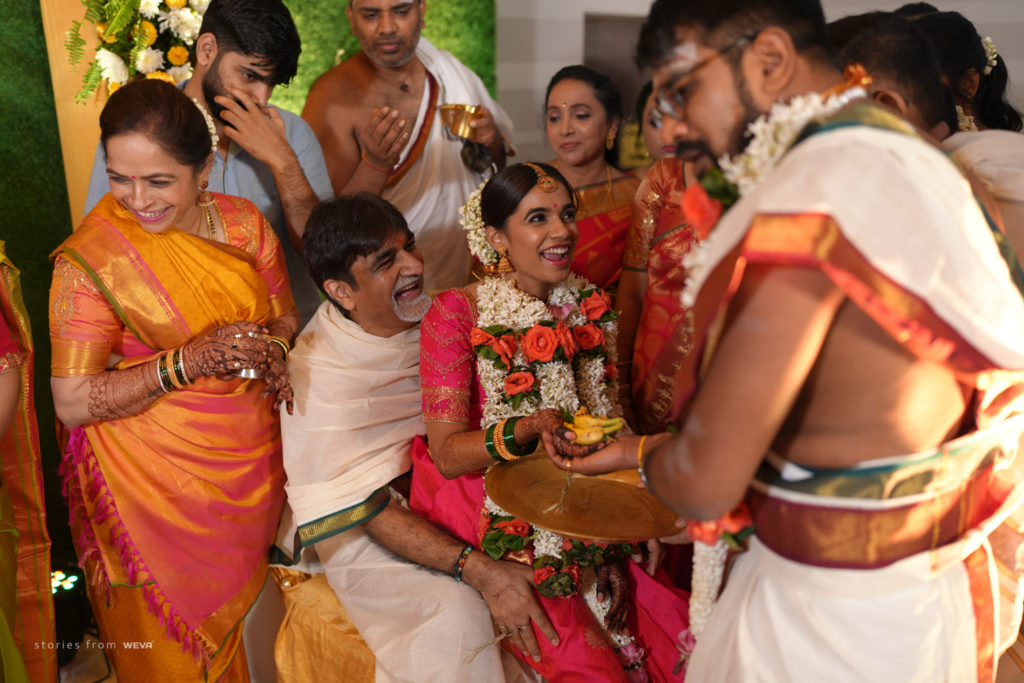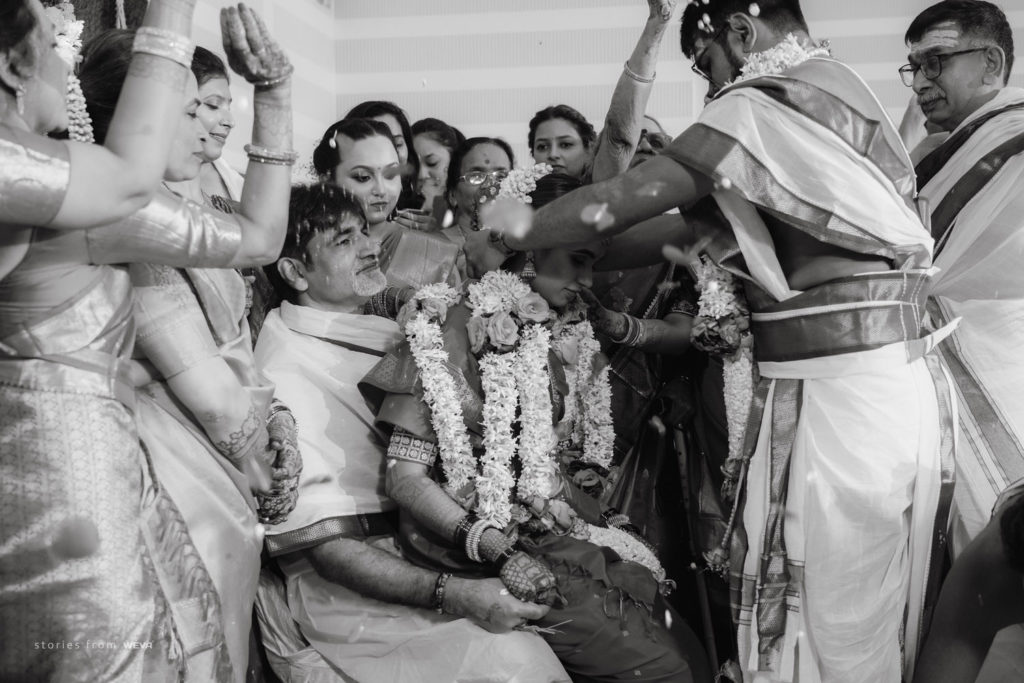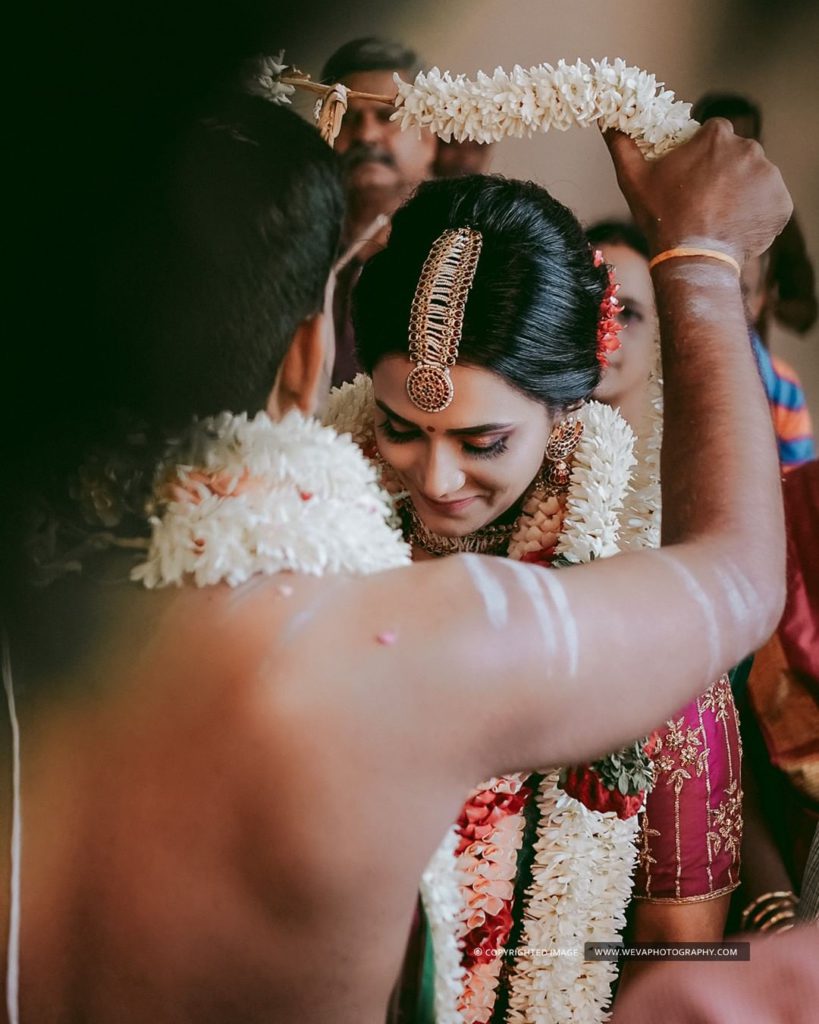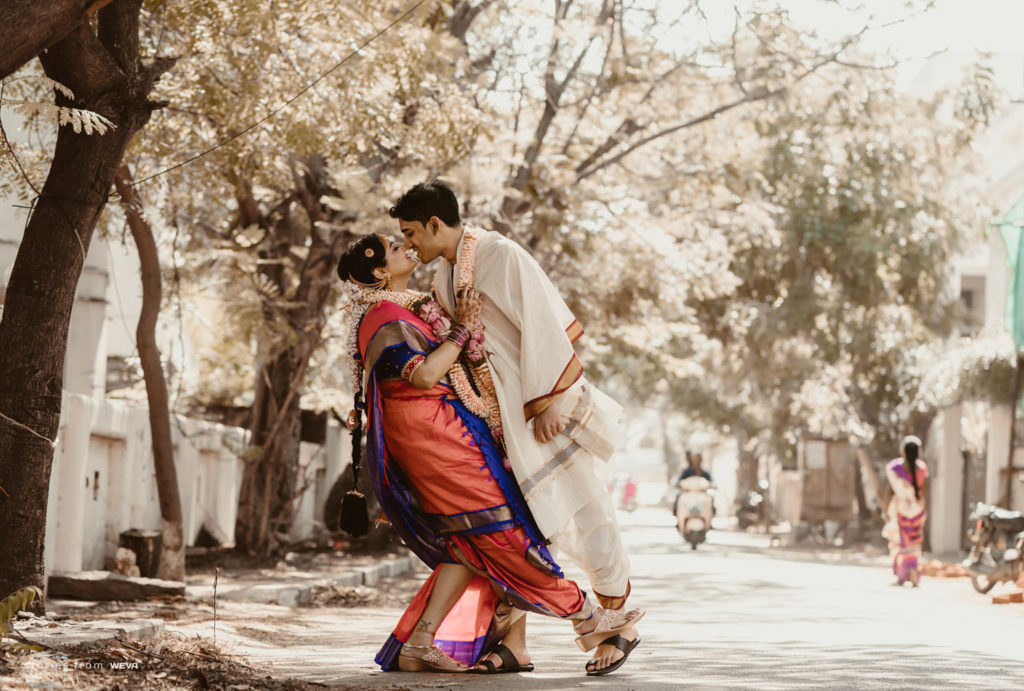Are you addicted to the beautiful Tamil Brahmin weddings of South India? Have
you ever wondered about the important highlights of the Tamil Brahmin weddings?
We are here to explain the types of rituals in Tamil Brahmin weddings including
the pre and post-wedding events. Our curation break downs the traditional wedding
rituals of Brahmins in Tamil Nadu with the respective names and order.
We hope you have a great time flipping through the latest trends in Tamil Brahmin
wedding photography. Undoubtedly, the events we have discussed here are the
must-document highlights of the wedding that cannot be missed. Let’s dive into the
details that we prepared with the narrations of the best wedding photographers in
Chennai.
Pre-Wedding Events
Nischayadaarthyam
As per the ancient Hindu traditions, any auspicious ceremony is begun only after
seeking blessings from Lord Ganesha. The ritual is a typical engagement ceremony in
Iyer families where both the families commit to each other for the wedding. Initially,
the horoscopes of the bride-to-be and the groom-to-be are checked to see if their stars
align. The engagement ceremony is held only after confirming this important part. As
per the Tamil Brahmin wedding trends of 2022, the date, time and venue of the
wedding are also finalized.
Sumangali Prarthanai
Prayer ceremonies are held for the bride to seek blessings from Sumagalis (unwed
female ancestors). The unwed lady friends and family are invited to the event. Along
with Sumangalis, a teenager or ‘Kanya’ will also be present in the ceremonies. To
point out, the event is carried out for brides before the wedding. For the grooms, the
event is conducted after the wedding in the presence of the bride.
Pongi Podal
Intimate ceremonies in Tamil Brahmin weddings like Pongi Podal marks it to be
quite special and heartwarming. As per the event, the soon-to-be weds are invited to
the aunts of mothers and father’s side. At the maternal relative’s house, the bride-to-be
is served with delicious Pongal feast. To explain, Pongal is a traditional dish made of
rice, turmeric and lentils. And, the same is carried out at the paternal relative’s house
for the groom.
Pand Kaal Muhurtham
Being one of most celebrated and oldest rituals of Tamil Hindu wedding tradition,
the event is blessed with the presence of all the elderly members. Here, a decorated
bamboo or wooden stick is placed in front of both bride’s and groom’s houses.
To clarify, this is a customary way of announcing to the neighborhood that a wedding
is happening. Added to that, prayers are chanted for the wedding to be smooth and
trouble-free. Later on, events like Haldi and Sangeeth are also celebrated in the
coming days.
Paligai Thalikkal
Paligai Thalikkal is an interesting ceremony where 9 varieties of grains are planted in
a clay pot. And, women from both families water it for around a week. Followed by
which the grains would sprout and grow out. The ritual symbolizes the growth of the
new family. Once the wedding is over, the newly wedded couple shall empty the
grains into a river or pond. Interestingly, it is believed that the couple will be also
blessed by the fish for feeding them.
Vratham
Vratham signifies fasting before the day of the wedding. Both the groom’s family and
the bride’s family fast a day before the wedding for the fruition of the new beginning.
Added to that, the groom seeks permission from his Guru (groom’s father) for ending
his bachelor phase (called Brahmacharya Vritha) to be a ‘Grihastha’ (a married man).
Most importantly, the samskaras performed in the event and the tying of a sacred
thread on the hands of the soon-to-be weds are supposed to save them from evil spirits.
Also, the couple is not allowed to leave their respective houses until their big day.
The Wedding Events
The traditional rituals of Tamil Brahmin weddings are followed as per the 4 famous
Vedas called Rig, Yajur, Sama and Atharva Vedas.
Mangala Snanam
On the wedding day, the couple is prepped by applying a natural mix of turmeric, oil
and vermillion early morning in their respective houses. This in turn is considered as a
special skincare tips of Brahmin weddings.
Yatra Danam
Yatra danam involves poojas to prevent evils before the groom leaves for the
mandapa on the wedding day. Undoubtedly, it is performed in the presence of a priest.
The event involves poojas like Ganapathi pooja. Also, pooja essentials were handed
over to the groom which is required during ‘Kashi Yatra’, a part of the wedding
ceremony.
Jaanavasam
In Jaanavasam, the groom is welcomed to the wedding stage or mandapa with
instruments like nadaswaram. And, the bride’s family exchanges gifts with the
groom’s family as a part of the welcoming. Later, the couple visits temples for prayers
and blessings.
Kashi Yatra
When it comes to fun, family rituals, Tamil Brahmin weddings are a treat to the eyes.
Kashi Yatra involves the groom pretending to go to Kashi after deciding to become a
sanyasi. Afterward, the father of the bride along with his relatives successfully
convinces the groom to cancel the Kashi yatra and return to marry his daughter. The
groom thereafter agrees with the bride’s father and is again welcomed to the wedding
stage with big gestures.
Maalai Maatral & Oonjal Ceremony
Once the bride is welcomed to the wedding stage, the couple exchanges beautiful
garlands. Thereafter, the bride and groom proceed to a decorated Oonjal or swing.
Upon sitting on the wooden swing, their feet are washed and cleaned with milk by the
married women in the family. Also, they are offered milk and bananas. This is
supposed to clear the tension and stress of the ceremonies. Added to that, traditional
songs called ‘Oonjal pattu’ are also sung.
Kannika Dhaanam
Kanyadaan or Kannika Dhaanam is an important moment for the bride and her father.
In the ritual, the bride’s father gives away his daughter to the groom through a series
of poojas and traditional acts. And, the bride is showered with gifts and blessings.
Afterward, the groom gives a nine-yard madisar saree to the bride which she has to
wear for the next ceremony.
Mangalya Dharanam
Once the bride returns to the mandapa in the new saree attire, mangalyadhaaranam
ritual is performed where the groom and his sister tie the Mangalsutra. Also, a sacred
turmeric thread is tied around the neck of the bride. Being one of the principal
ceremonies of the event, auspicious instruments like nadaswaram will be played.
Added to that, the groom’s sister comes with silver toe rings for the bride.
Saptapadi
Later on, the couple takes seven holy rounds around the pooja fire. The chanting
during this ceremony signifies the opportune time, food, a harmonious life, strength,
wealth, prosperity, progeny, a long-lasting friendship and love.
Sammandhi Maryathai
This ritual marks the conclusion of the wedding where both the families exchange
hugs and gifts. Followed by which, the bride proceeds to her in-law’s house after
bidding farewell to her dear family.
Post Wedding Rituals
Paaladaanam
Before the journey to the in-law’s residence, the newlyweds seek blessings from the
bride’s family and extended families.
Gruhapravesha
Gruhapravesha is a divine ceremony when the bride enters the groom’s house for the
first time after the wedding. To point out, the bride shall be holding a lamp. And the
groom’s mother shall perform Aarathi before the auspicious Gruhapravesha.
Valeyadal
Thereafter, the sister of the groom showers the bride with gifts. And, the family
proceeds to play some traditional games as part of their warm welcome to the bride.
Maruvidu Varudal
As a concluding event, the couple visits the bridal paternal residence after 3 days of
the wedding.
We hope you had a nice time wandering through the condensed form of Tamil
Brahmin wedding highlights. Our curation aims at providing an insightful read about
the interesting wedding traditions of Tamil Nadu. Being experienced wedding
photographers of Chennai, we have been covering the best Tamil Brahmin
weddings of all time. When it to comes to rituals, we have been sliding through a
number of intimate ceremonies. We hope to bring more break-downs like this from
different wedding traditions of India.


